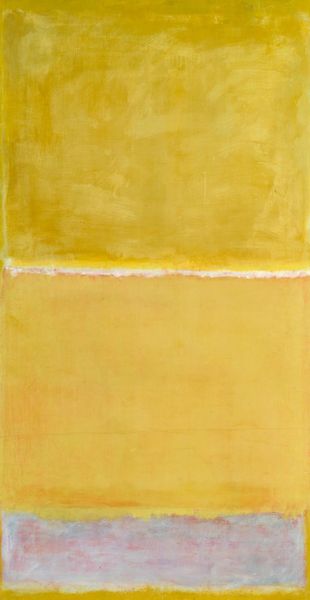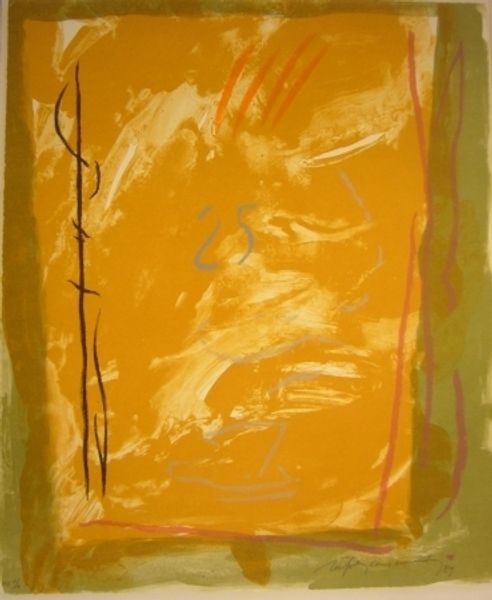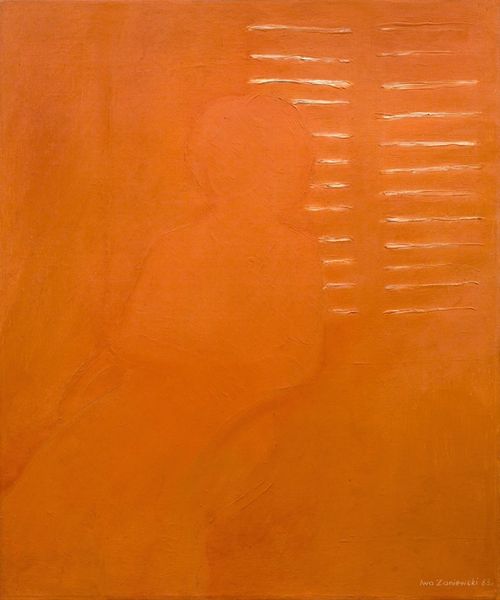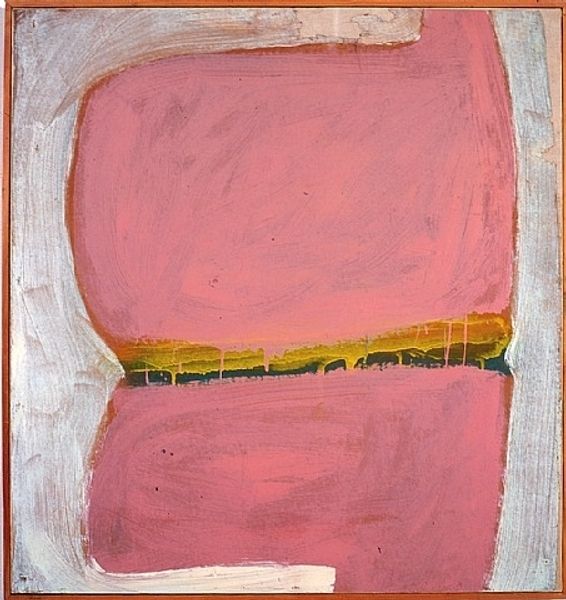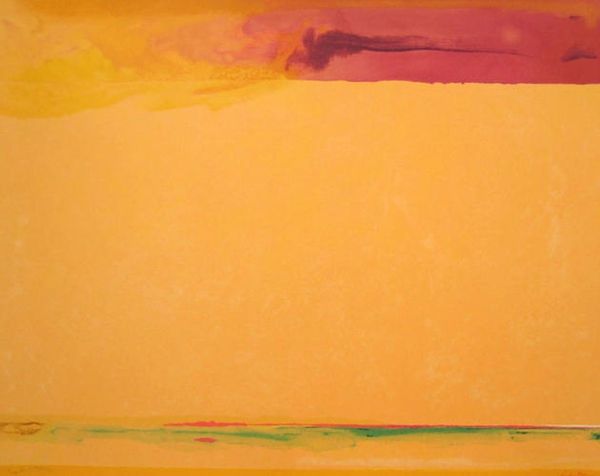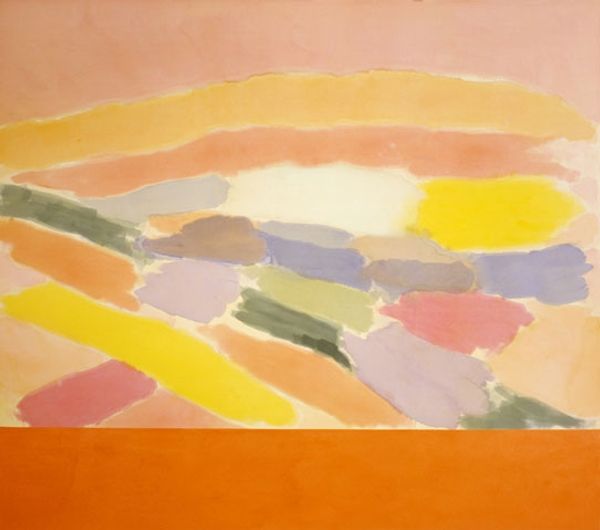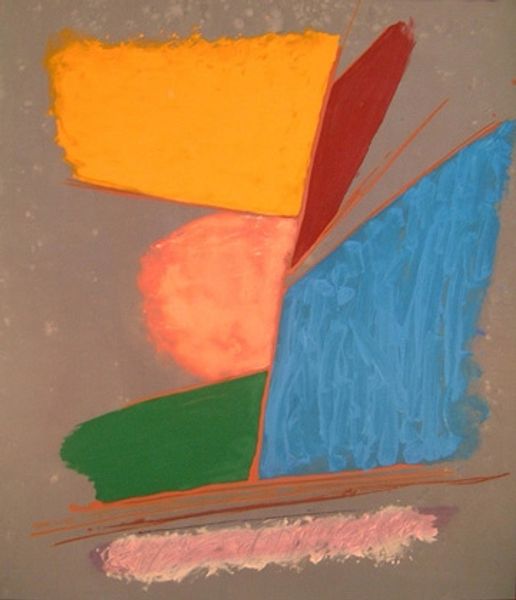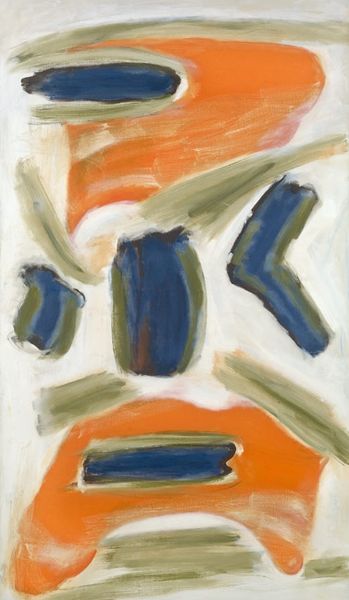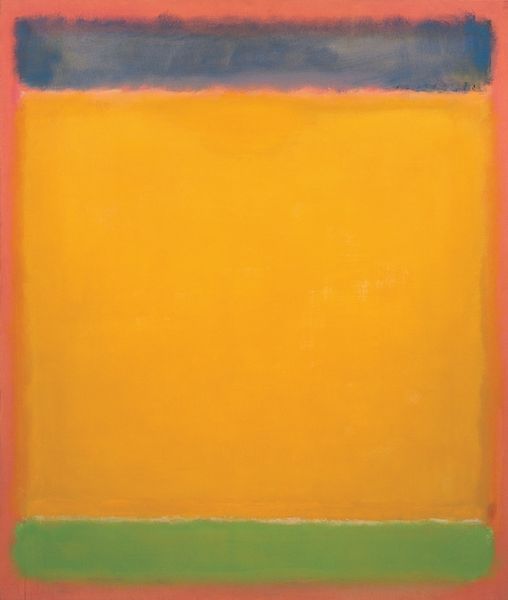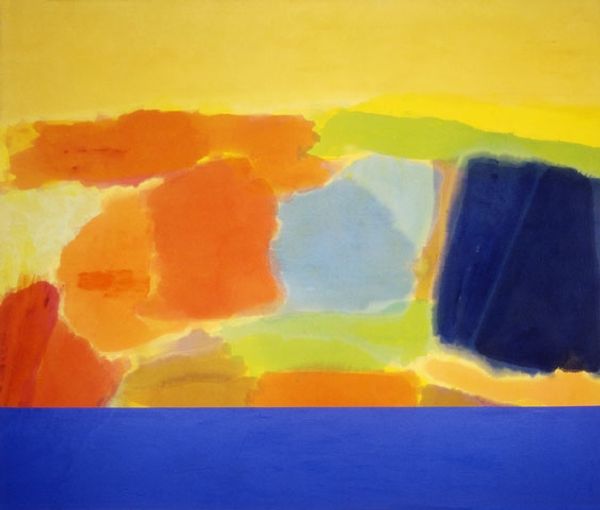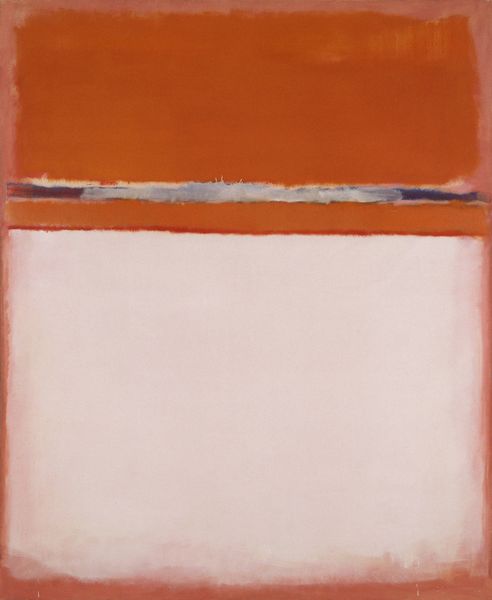
Copyright: Dan Christensen,Fair Use
Editor: So, here we have Dan Christensen's "Sabu," created in 1980 using acrylic on canvas. I’m really struck by how the shapes almost float, and how the drips feel both controlled and chaotic. What do you see in this piece, considering its historical context? Curator: Looking at "Sabu" through a critical lens, it's hard not to consider the social and political landscape of the 1980s. Abstract Expressionism was waning, and artists were grappling with issues of identity, power, and representation in increasingly diverse ways. What connections might there be, do you think, between the deconstruction of form in abstract art and concurrent deconstructive movements in critical theory? Editor: That's interesting, I hadn’t thought of that. So you’re suggesting this use of abstraction could be Christensen's way of engaging with these larger cultural shifts? Curator: Precisely. Abstraction itself can be seen as a form of resistance – rejecting traditional representational modes, and thus, perhaps challenging dominant narratives. How does the color palette speak to you? Does the limited range contribute to a sense of restraint, or does it evoke something else entirely? Editor: I think it feels almost hopeful? The yellows especially feel quite bright. Curator: And does that hopefulness resonate with the art world’s move to embrace wider views? Editor: Maybe... This conversation is giving me so much to think about when looking at abstract art from this time. It's not just about color and form. Curator: Exactly! And that’s the beauty of engaging with art from an activist point of view – we uncover those deeper, more nuanced layers of meaning, prompting crucial dialogue on how our histories shape creative expression.
Comments
No comments
Be the first to comment and join the conversation on the ultimate creative platform.
